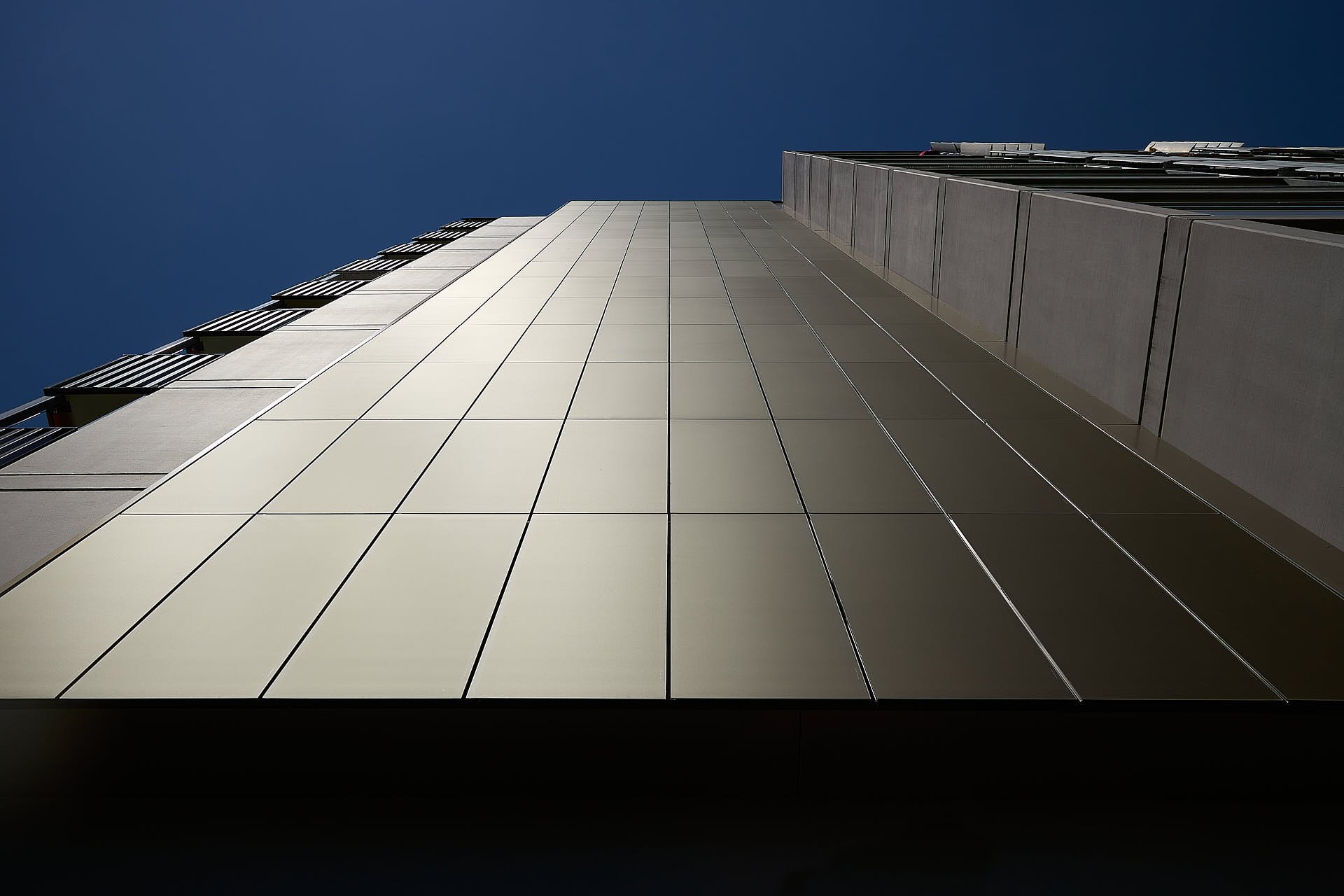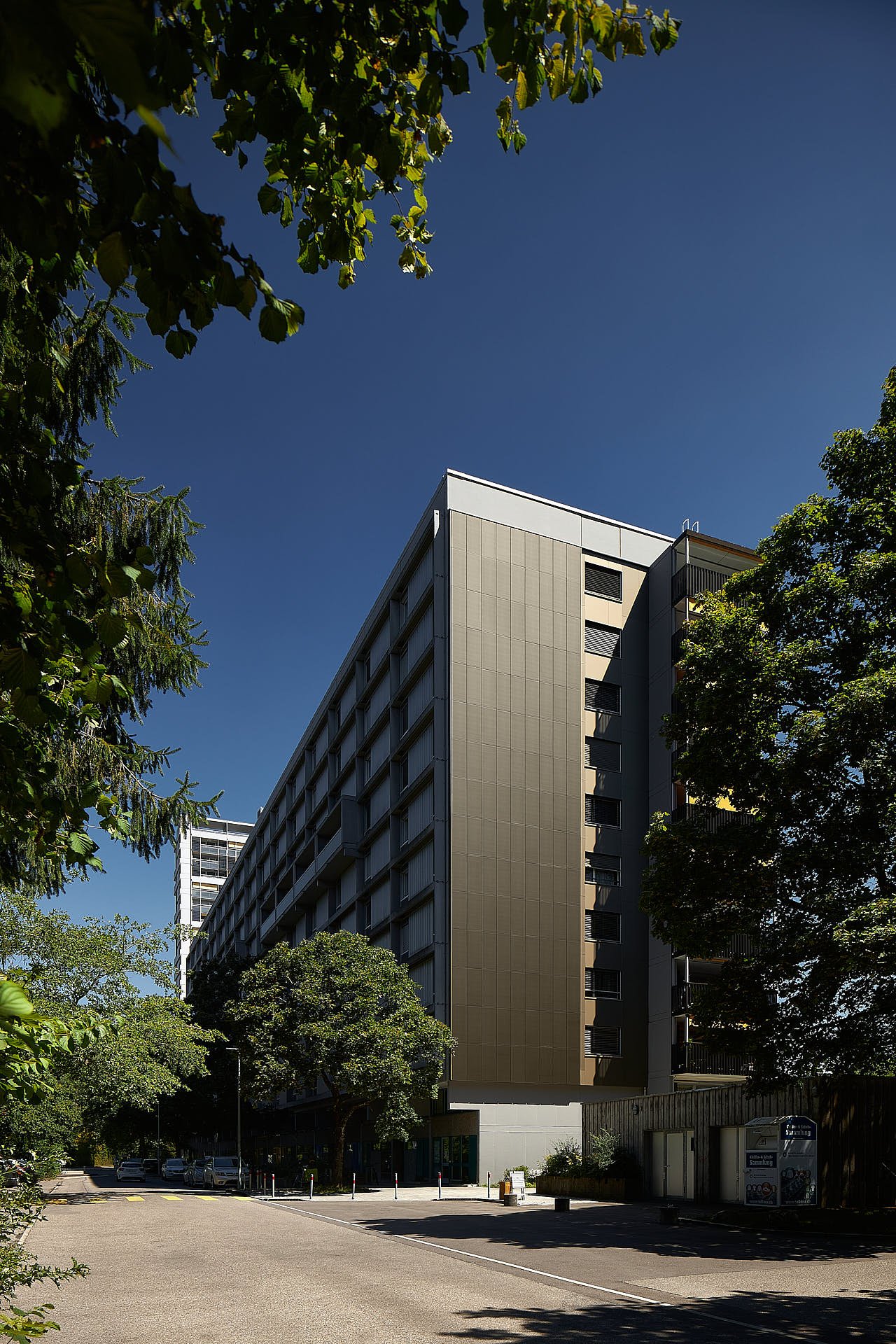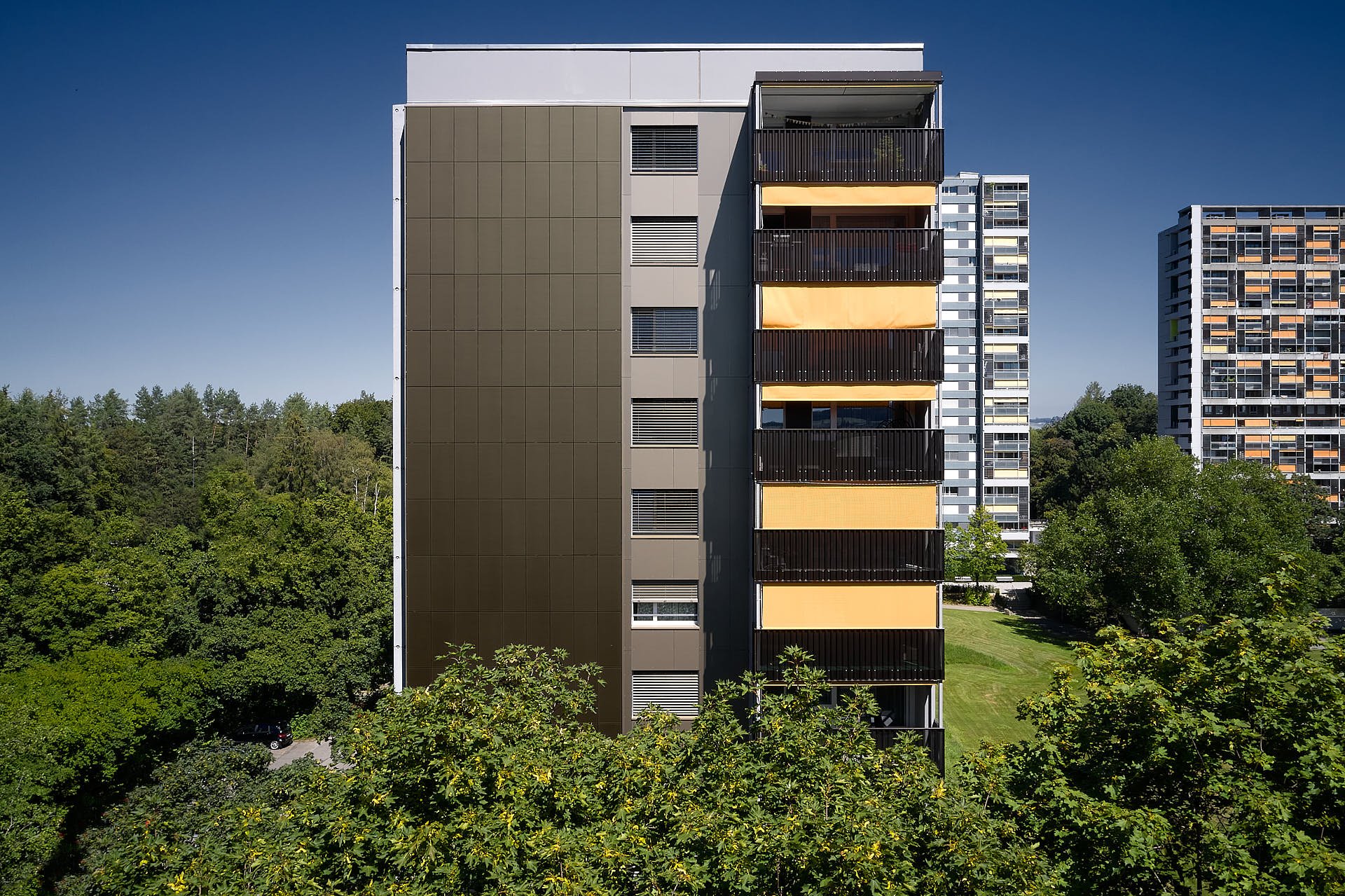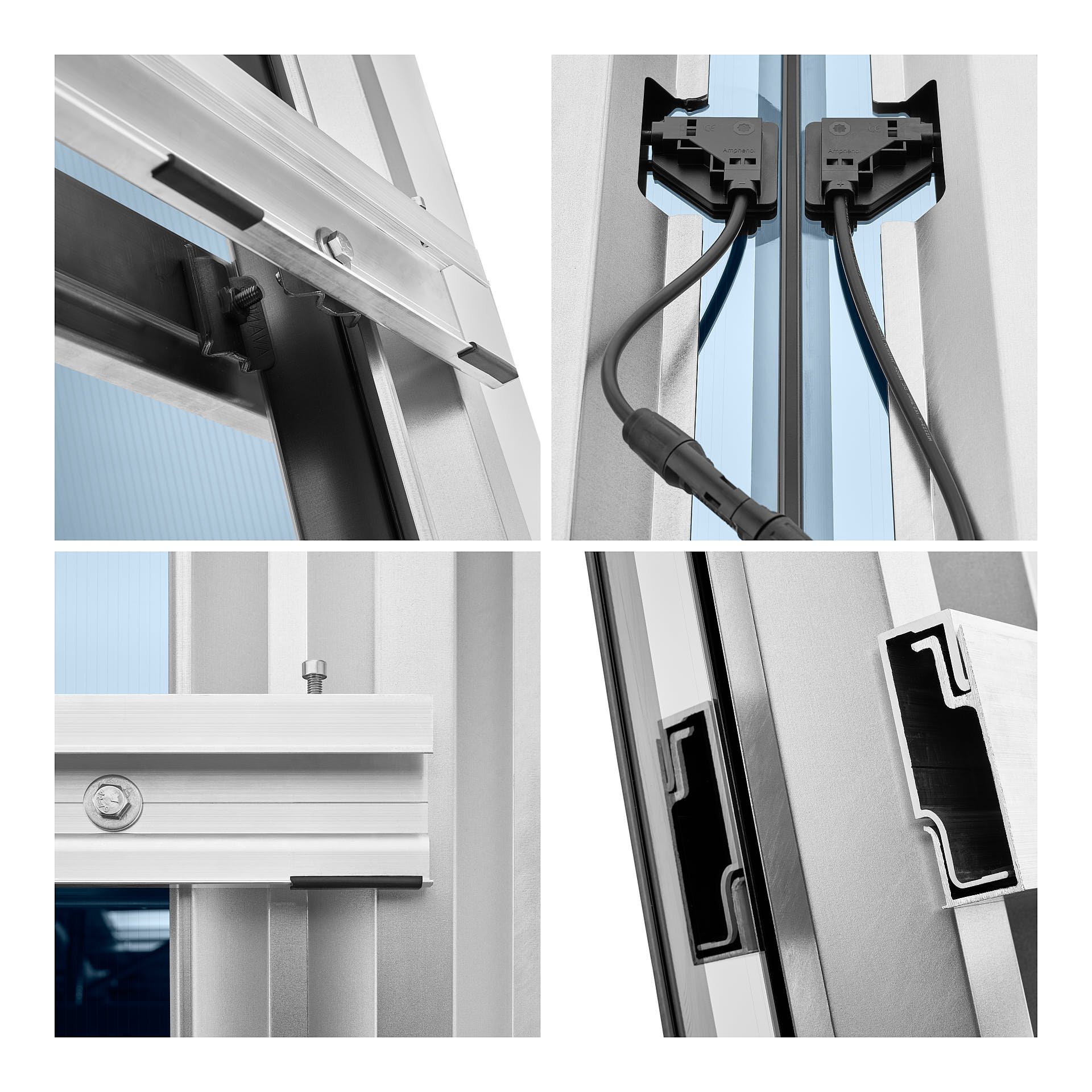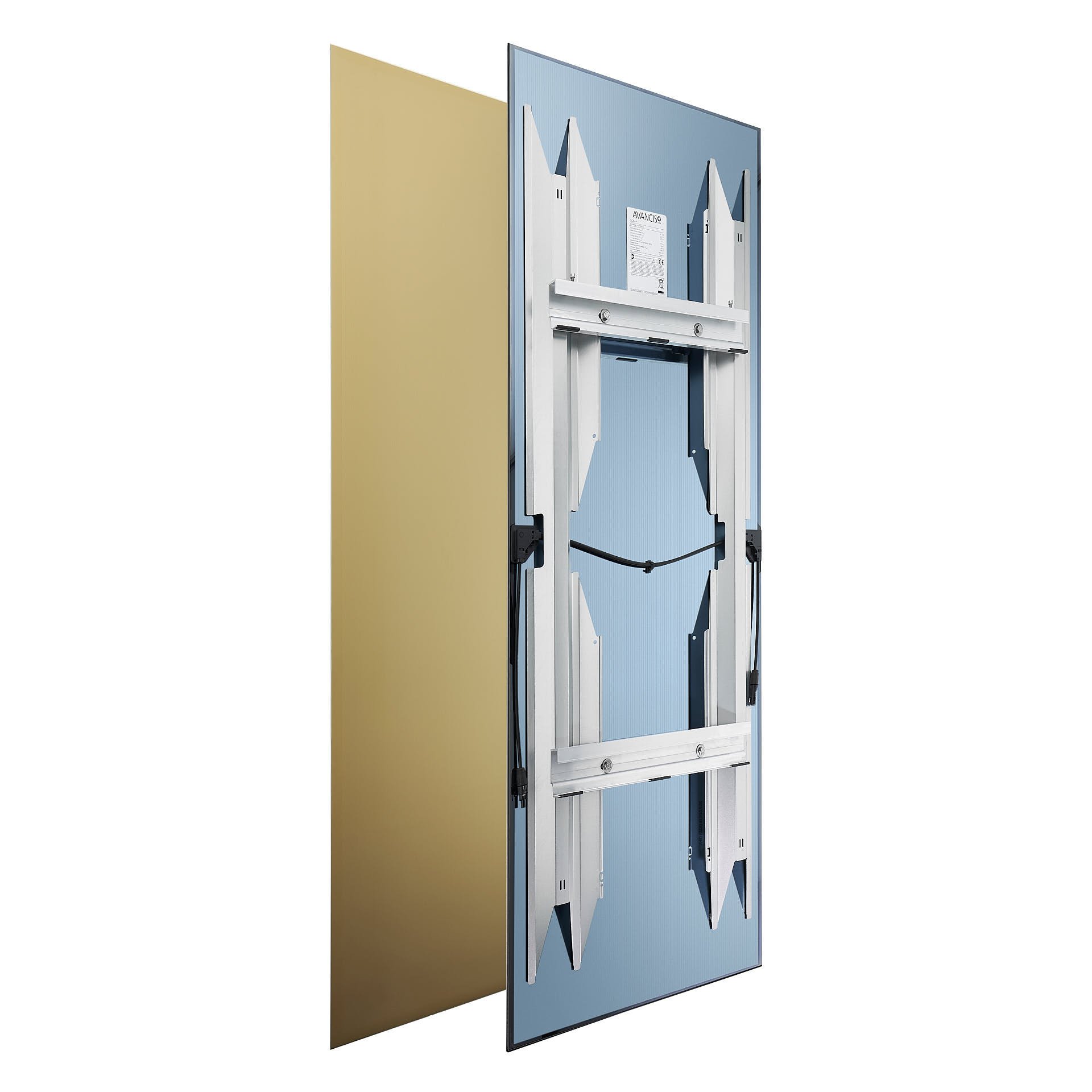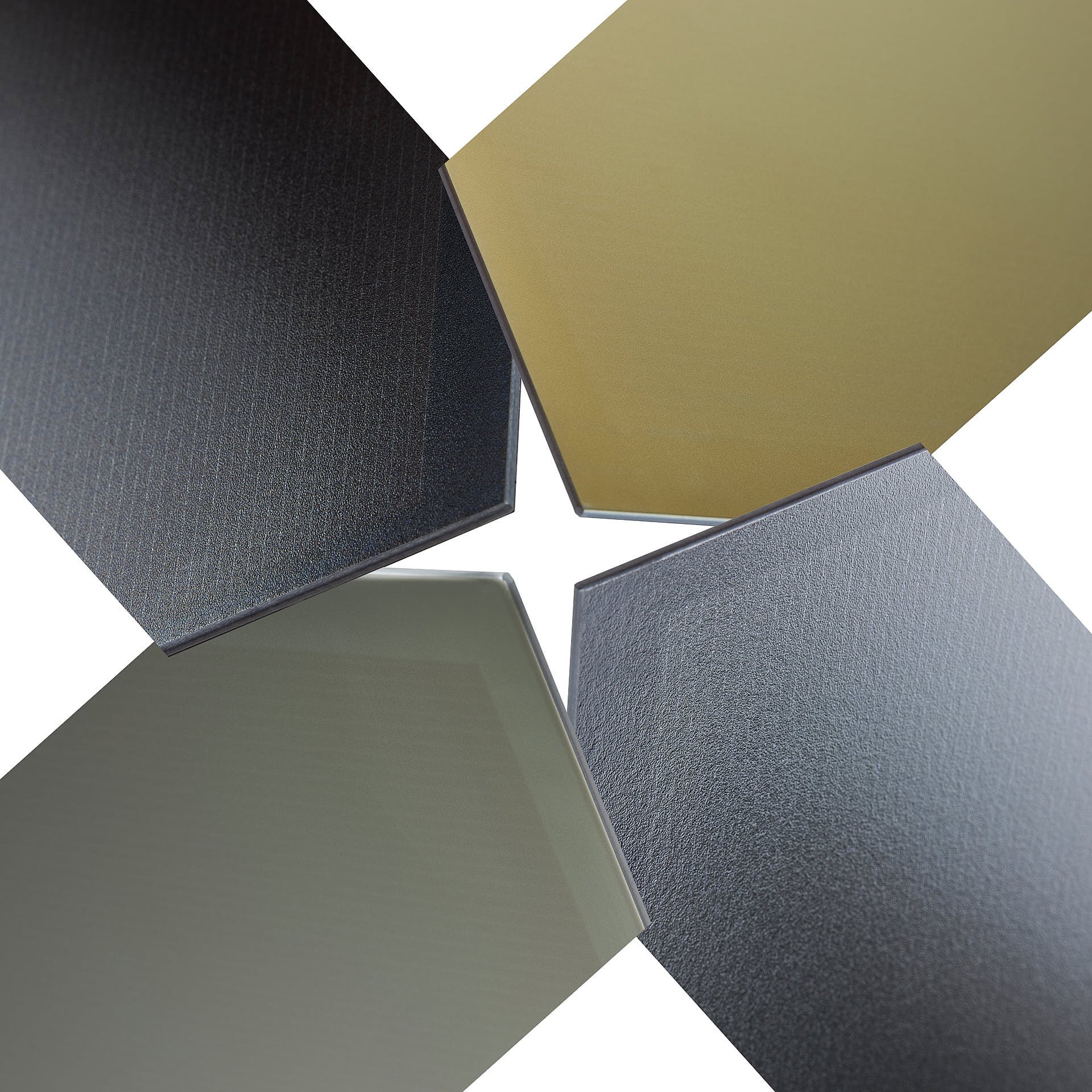Photographing Solar Modules as a Design Element of the Facade
Client AVANCIS Assistant Mathias Pfützner Art Product photo image catalog Location Stadtwerke Bad Hersfeld, Westspitze Tübingen, residential and commercial buildings in Bern, DAV climbing hall Eichstätt Location Germany, Switzerland
Color – a word that has been with us since early childhood.
Who would have thought that dealing with color would still occupy me so much, some three decades after my first wax crayons? The introduction to the subject was simple. Primary colors like the red car or the green tree were quickly learned. Secondary colors were added in the paint box, and at the latest during the first shopping trips, I stumbled upon color exotics like stone blue or coral.
The problem that colors are not real at all, but only a mixture of incident light waves and the reflection properties of the exposed surface, only became clear to me as a photographer.
This year, AVANCIS, a leading manufacturer of solar modules for facades, approached me. They needed a complete visual portfolio of their new SKALA product line for their website and trade fair appearances. The solar modules are characterized by their special colors, which range from a subtle matte look to intense, light-dependent color gradients. A dream for any architect who values power generation and a modern aesthetic.
Photographing Solar Modules "On Location"
Since the USP of the solar modules is their color, it quickly became clear that a consistent color workflow would be at the center of my photography. Eight reference projects in Germany and Switzerland needed to be photographed. In addition, there were drone photos, video clips, and studio shots of the modules, totaling over 80 motifs. The photos were to be taken in a sunny daytime atmosphere (always advantageous when marketing solar modules ;). Fortunately, this summer offered us a very stable high-pressure front, so that I could photograph the pictures in 5 days without interruption.
As usual with my work, half of the projects were still in the final construction phase, so I had to work elegantly around the last scaffolding when choosing my motifs. For my intensive shooting planning, I was rewarded with great light and exciting motifs from climbing halls in Bavaria, office buildings in Tübingen, and residential buildings in Bern.
The drone photos and drone videos gave an exciting new perspective on the construction projects. From a lofty height, the viewer with a head for heights can place the building in its surroundings much better. Mixed with photographs from the ground and detailed shots of the solar modules, this results in a coherent overall picture that my client can use for a variety of marketing measures and sales talks.
Photographing Solar Modules in the Studio
I created the studio shots with my mobile photo studio directly at the AVANCIS factory. This allowed me to minimize the logistical effort for my client and capture as many motifs as efficiently as possible in one day. In addition to the entire color palette of the solar modules, I also photographed the technical suspension as well as surface details of the modules. It was important with the studio photos that all modules are taken from exactly the same perspectives, so that they later result in a uniform, professional look in marketing.
Color fidelity in architectural photos
But what about color fidelity? During my work, there were a number of variables that influenced the color of the modules. When I photograph the solar modules in the midday sun, they appear neutral, while in the last light of the evening sun they appear very warm. In homogeneous studio light, it's different again. In addition, a different color impression results on the module, depending on the direction from which the light source hits the surface. Dust in the air, dirt on the surface of the modules, and the weather also play a role.
As a photographer, it is my responsibility to photograph the buildings and solar modules as accurately as possible under the respective circumstances. That's why I edit reference images during the shooting, which realistically represent the color mood.
On the technical side of the photo shoot, I could at least control everything. With color charts, I had reference colors to which I could calibrate my cameras, and on a calibrated monitor, I had a color-consistent workflow in image editing. In this way, I was able to give the images a uniform style during editing despite different initial conditions.
In coordination with the technicians and the marketing team at AVANCIS, we determined which facade would receive standardized colors and for which images we would allow changes due to environmental factors. With this consistent portfolio of photographs, AVANCIS can now professionally market its new product line.
“Albrecht Voss perfectly captured our facade projects, with a harmonious overall composition and an eye for detail. His professional and solution-oriented approach, especially during the studio shots, greatly impressed us.
The positive feedback we receive for the images speaks for itself. Great work.“
What's behind it
Pressing the camera's shutter button is only half the job. In image editing, the composition is perfected, contrasts are improved, colors are unified, and distracting image content disappears like cards up a magician's sleeve. In this picture, the building stands like the bow of a ship over the railroad tracks in Tübingen.
A particular challenge in the image editing of the photo were the graffiti on the wooden planks and the scaffolding on the front of the building. After editing, the focus of the image is much more on the property.












